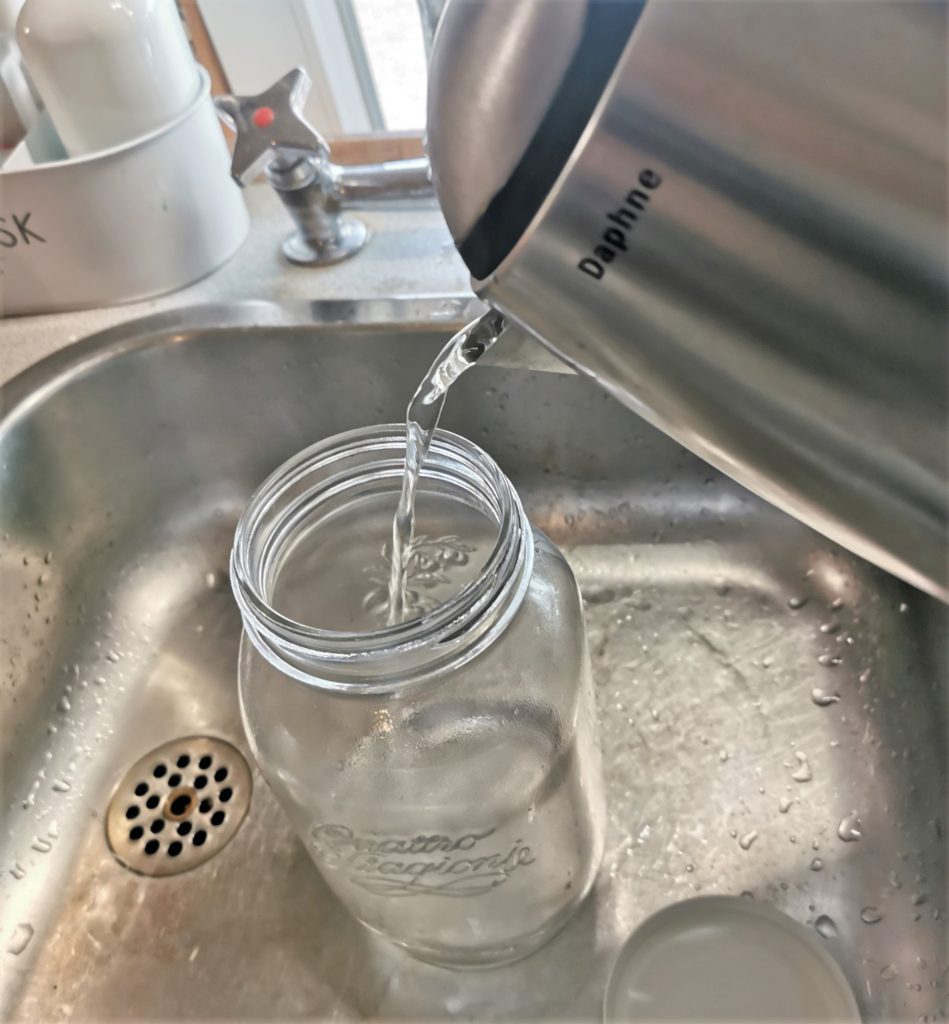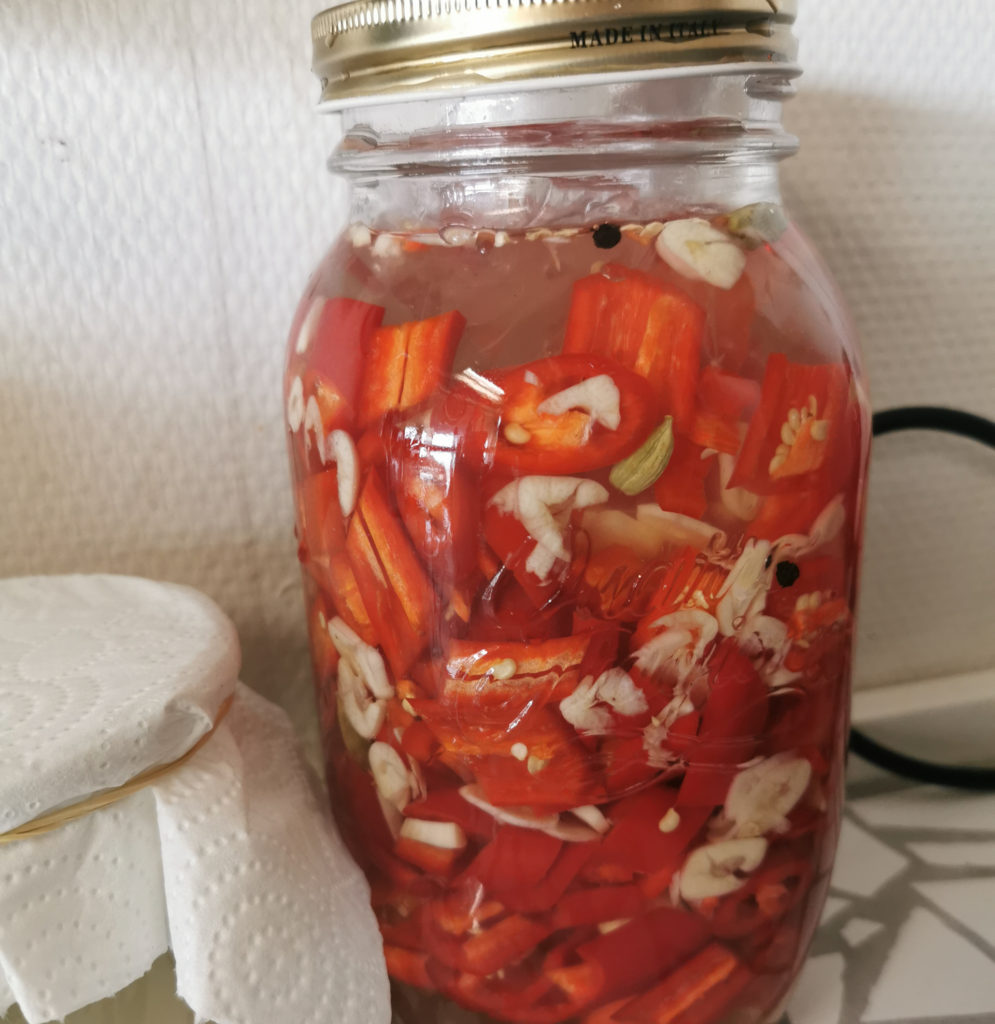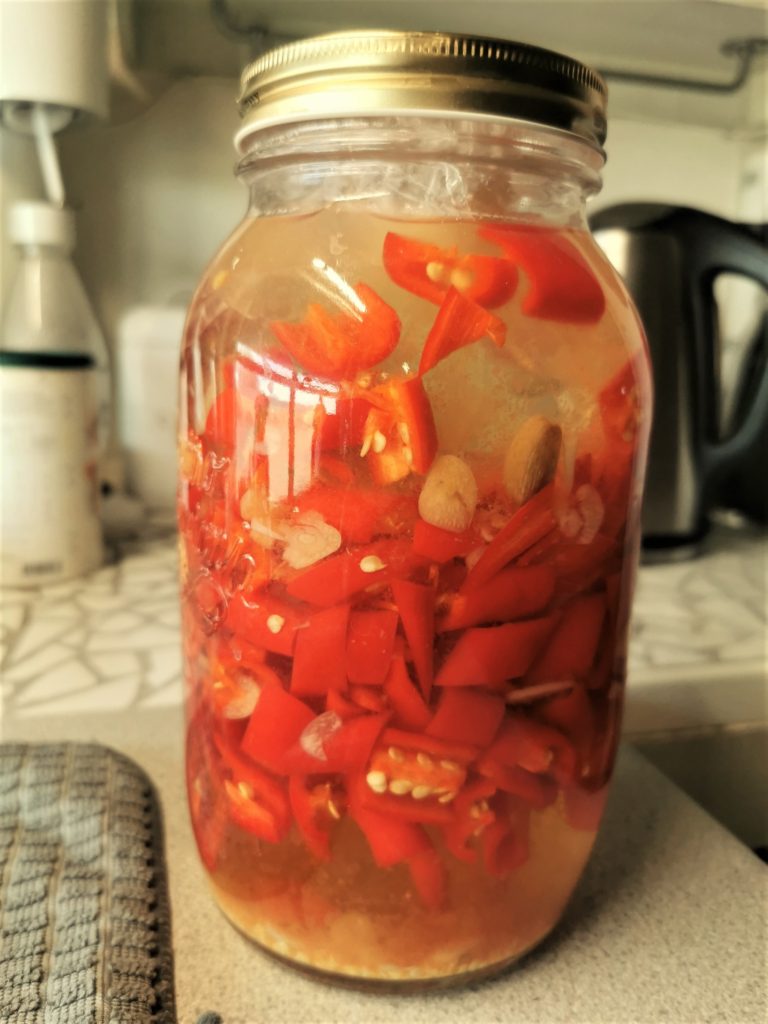Let’s talk about fermentation. Well no. That is another longer story. Let’s talk about fermenting your chilies before you blitz them into liquid gold. I mean, really. Once you go fermentation you can’t go back. I promise you.
I love my Frank’s ® RedHot ® Buffalo Wings sauce and will go so far as to say that I couldn’t or wouldn’t live without it. Growing up in, let’s be honest, very Americanized Iceland, I had access to a wide variety of US made goods. This was kind of unavoidable development in Iceland because the US had a military base there from WWII into the 2000’s. We sort of had the best of both worlds. We are very much like our fellow vikings in Scandinavia but spoiled rotten with the availability of USA products. So I and Frank became besties.
The Danes don’t know
But then I decided to move to Denmark. They don’t know Frank or should I say didn’t know him. I have seen his sauces lately in laughingly small bottles, or I should say a sample size unit more then anything else. They are definitely not meant for sharing. Anyway and also, I didn’t move to mainstream Denmark but out into the sticks. Don’t get me wrong I love the sticks and wouldn’t have it any other way, but I also do love having my food taste of something, so what is a girl to do? (Sshhhh, I know I’m a wee bit older then a girl, don’t judge)
Necessity is the mother of invention
Of course I am a solution oriented person. Well, at least after I have had a melt down, I usually am, so I got round to trying out recipes I got from the internet for hot sauce. I am a great cook or at least a good one, so this would be easy, right? I must have tried a dozen and more before I gave up and called for help in the form of my mom. I had sort of promised myself that I would not bring food items from home as a staple, but rather make due with what is available here or make it myself. But I tried and tried, and I just couldn’t get it right and indeed was so far off I didn’t see how to improve it. So mom became my hot sauce dealer. Thanks mom, you are a lifesaver, well you keep me sane.
Now a few years later I am looking for a recipe for sourdough bread and stumble upon Joshua Weissman. I have to recommend his YouTube channel. I love his food and his style. I will reference him again because he is a fellow enthusiast of all things fermented, but that is neither here nor there. Anyhow, he has this gorgeous recipe for fermented hot sauce and I was like; what? Fermented! Tried it and voila! There was the missing element. Umami (I’ll tell you more on that later – you know fermentation the holy grail). The layers and complexity of the taste is amazing and life obtains balance again. Of course I have tweaked it a little since, and added some things and made it mine. Everyone who knows me will expect no less.
Important information – Pay attention
First off. There is a very important rule of thumb when making the brine for what you are fermenting. Chilies, and indeed peppers, cucumbers, and asparagus need at least 3% salt in the brine. That means 3% of the total weight of both water and chilies. This is important because, you know, botulism. Not fun.
Super important stuff
When you get to the point of putting the lid on, don’t screw it tight. Well you could but the jar will explode on you. Not kidding. The buildup of carbon monoxide in the jar will out, no matter what you do, so you better give it an out. Just leave the lid a little loose or loosen it once a day at least to let out the excess gas.

Fermented Hot Sauce
Equipment
- 2 liter (2 quart) glass mason jar
- Knife
- Cutting board
- A small plastic bag or some type of weight
- Scale
- Calculator (I'm not kidding)
Ingredients
- 500 g Chilies About a pound
- 1 L water About a quart
- 5-6 black pepper corns
- 2 cardamom seeds
- 5-6 garlic cloves (to taste)
- 4 tbsp sugar (optional)
- 3 % salt of the combined weight of everything else
Instructions
- This is important. Weigh the jar and write the number down. Don't be like me and not. Then you'll just be a few minutes later like a dumbass and have to empty the thing out and it's just a mess. Just write it down please.
- Now, we sterilize the jar, or thereabout. We put it into the sink and pour scolding hot water into it all the way to the top. Pour some into the lid as well. Let it stand for a few minutes before you empty it out. Watch out it will be, well, scolding hot.
- Now down to business. I start with rinsing the chilies in a bowl with water and a little vinegar then rinsing them off. Cut them into about 2 cm (inch) large pieces. Put them into the jar seeds and all if you like our hot sauce hot, if not you're an idiot. Just kidding, Then just hold back some or all of the seeds (I dry them an keep them for planting next season – waist not want not).
- Peel the garlic and slice finely. The more surface area the more flavor. Put them as well as the sugar (if using), peppercorns and cardamom seeds into the jar as well.
- Pour water into the jar until you cover the chilies not minding if they float a little, you'll weigh them down in a minute. Leave a few cm (a couple of inches) headroom in the jar.
- Now for the fun process of mathematics in cooking. I'll first iterate how very very important this step is. When we ferment we have to make sure that we create an environment where good bacteria can work their magic and where the bad cannot. This is why we use a calculator and scale in fermentation.
- Weigh the jar plus all ingredients. Remember the number you weren't going to write down because it was so easy to remember? Right? Glad you decided to follow the instructions and write it down. Now, deduct the weight of the jar from the total weight.
- The number you are left with is the total weight of all your ingredients. You need then to multiply this number with 0,03 to get 3% of that total weight. Confused yet? I'll give you an example if your total weight is 1500g then the math is 1500×0,03=45. This means you need 45g of salt. (If the total weight is 50 ounces then the math is 50×0,03=1,5 ounces of salt.
- What I do next is pour most of the water from the jar into a bowl and add the salt mixing well, before I pour it back into the jar. I seal the jar tightly and shake it a bit mixing the ingredients well.
- At this point you should se that the chilies have a tendency to float rather then stay submerged. This is less then desirable because this exposes them to oxygen and increases the likelihood that they will go bad. What you want here is to find something you can weigh them down with. I use a clear plastic bag that I put about a half a cup to a cup of water into and tie off. Then I gently place it inside the jar making sure all the chilies are submerged.
- Don't screw the lid all the way just lightly close it making sure the excess gases from the jar can escape. If you don't, or are using a clip on lid, make sure you "burp" the jar at least once a day (I would do it more often). Label the jar with both what is in it and date, and leave it out to ferment.
- Now it's just a waiting game. Leave it out on a shelf or a countertop to ferment for 5 to 14 days. you can taste occasionally to see if it has the level of fermentation you want.
- It's all done fermenting to your specific liking? Good. Now you strain off the liquid, but hold on, don't throw that liquid gold away. You'll need some of it in your hot sauce and the rest you should keep it and use it as a condiment in itself, on fries, grilled meat, etc.
- Throw the rest into a blender and blitz it into oblivion. Pour small amounts of the brine into the blender until everything comes together. If you want you can add a little vinegar and/or salt to taste. Strain the sauce, don't strain, I really don't care and it is your hot sauce so it's totally up to you.
- Pour it into a bottle or keep it in a jar in the fridge because it will keep fermenting if you don't.







